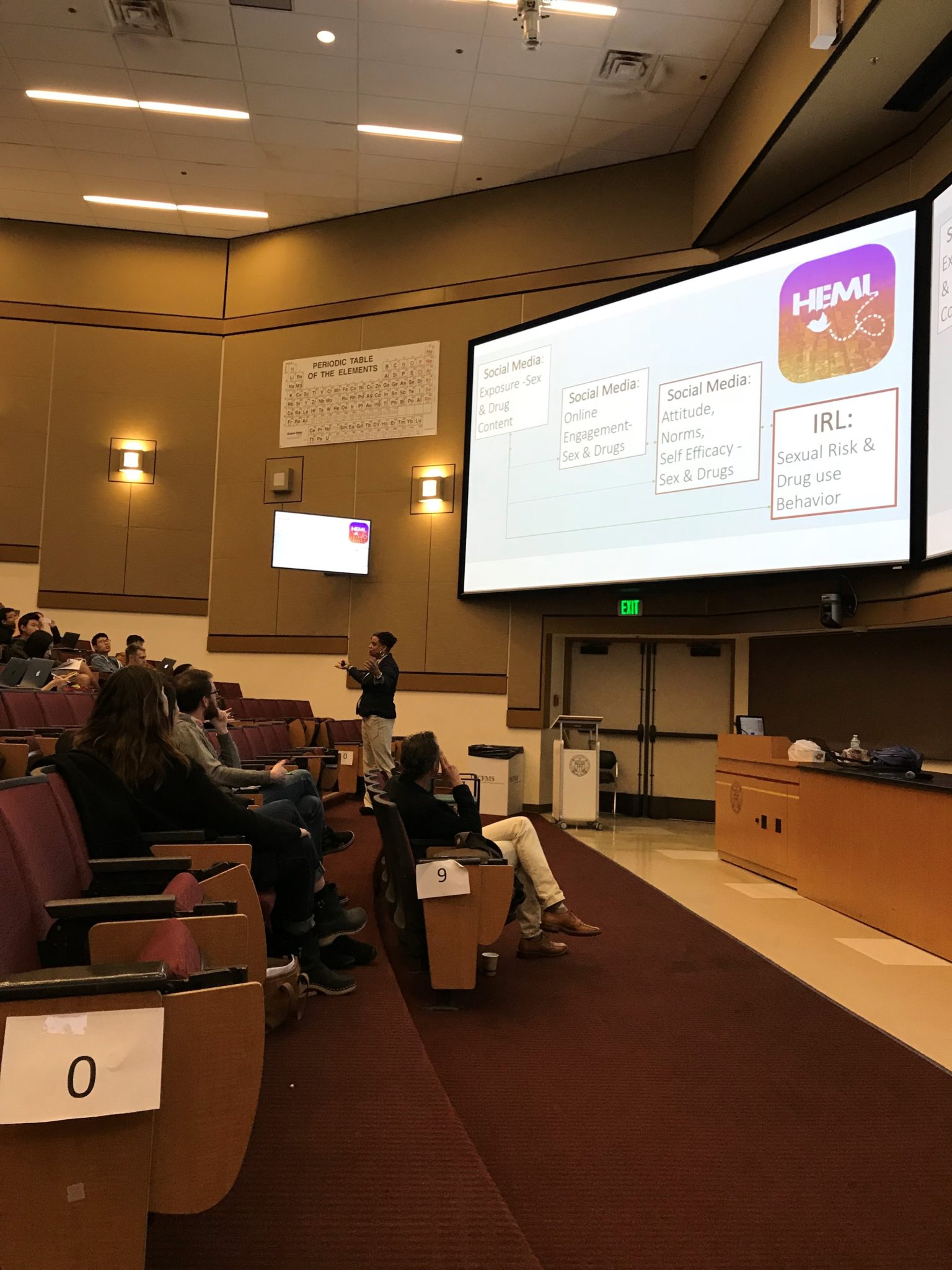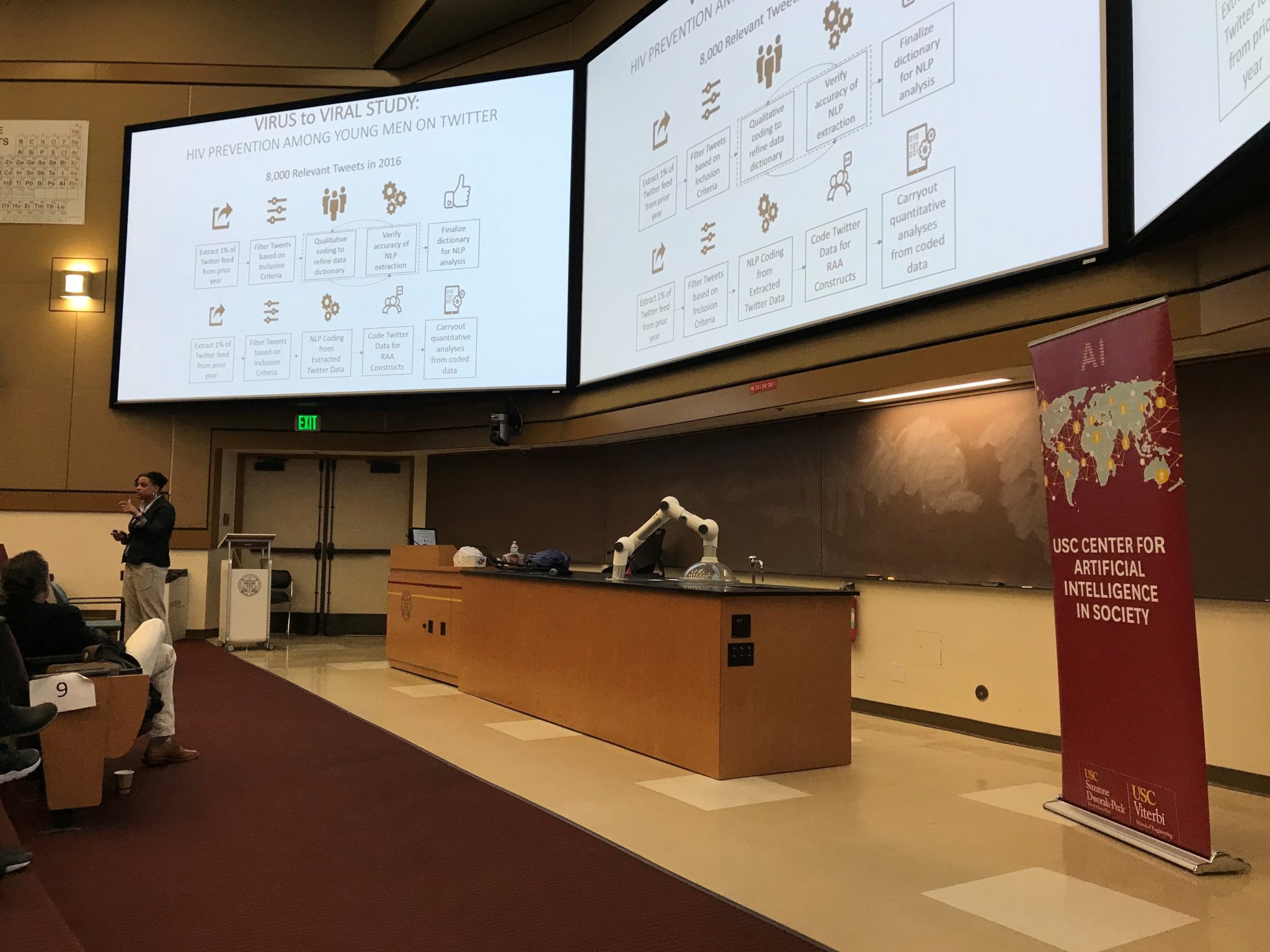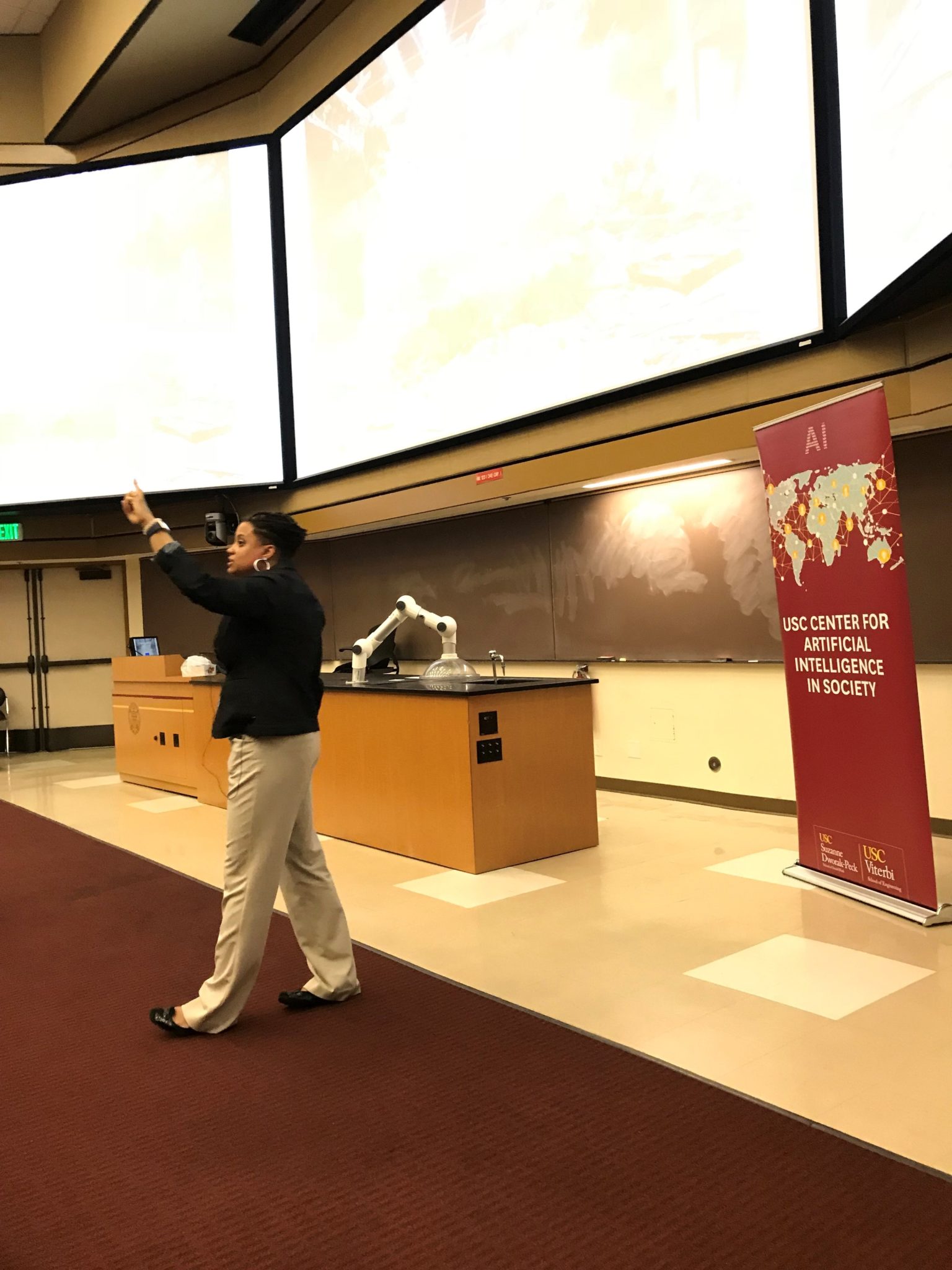Dr. Robin Stevens, of the University of Pennsylvania Nursing School, lectured on her research which focuses on the way social media influences adolescent risk behaviors. She spoke about a term she coined “The Digital Neighborhood” or “Digital Hood.” Dr. Stevens explained this is the space online where youth can interact, receive, and share information, and a place where behavioral norms can be reinforced. Social media platforms within this space include Twitter, Instagram, Facebook, and Snapchat. Dr. Stevens gave examples of tweets, memes, and photographs which all serve to reinforce certain societal norms about sex or drug use.

Dr. Robin Stevens presenting at our USC CAIS seminar on February 21, 2018.
Dr. Stevens explained the manner in which these platforms can be utilized for both the promotion of risky behaviors or as a prevention tool in social interventions. This is due, in large part, to statistics which note youth are using social media at a rate of up to 89%. Although, Dr. Stevens’ notes there are many challenges to performing research in the social media space. This is stemming from the vast supply of available and diverse shared voices and content of social media users which may be considered for research. In a sense, everyone’s digital neighborhood is different and this impacts the messages they are sharing and receiving. Consequently, it impacts the available data for prevention research.

More specifically, Dr. Stevens shared the data collected from three of her most recent studies. The first of which, the #sexmessage study, was a longitudinal study which looked at 150 African American and Latino youth. In this study, it was found that “word of mouth” and social media were the primary sources of sexual health information. Also, there was an unprecedented amount of reproductive violence found on social media which was not originally projected. Dr. Stevens explained the difficulty in identifying sex-related keywords for this study. This was due to the fact that keyword identifiers did not always relate to sexual intercourse but could be a discussion about something else entirely. The most successful process to code the identified messages were the use of youth to interpret tweets and college students to code the data.
Another study of note was the Highs and Lows study. This research analyzed the way in which youth were talking about drugs and mental health on Twitter. This project found users who were talking about drug use were often confident about their usage with many positive drug-related messages. Similar to the #sexmessage study, coding the correct words to ensure the users were talking about drug use rather than alternative messages was an essential aspect of this study.
Finally, the Viral to Viral study is Dr. Stevens’ most recent project. The focal point of which is looking at HIV prevention among Twitter users. This study is analyzing 8,000 relevant tweets from 2016. These tweets are in addition to the five tweets before and after the identified tweet targeted for its message to provide context regarding prevention. This research is also focusing solely on tweets in which the age and gender of the tweeter can be identified. The reasoning being that behavioral characteristics can be analyzed for their impact on the study. Currently, there are 5,600 prevention tweets identified. Overall, Dr. Steven’s research contributes to the knowledge base regarding how social media can influence public health and associated risk behaviors.




